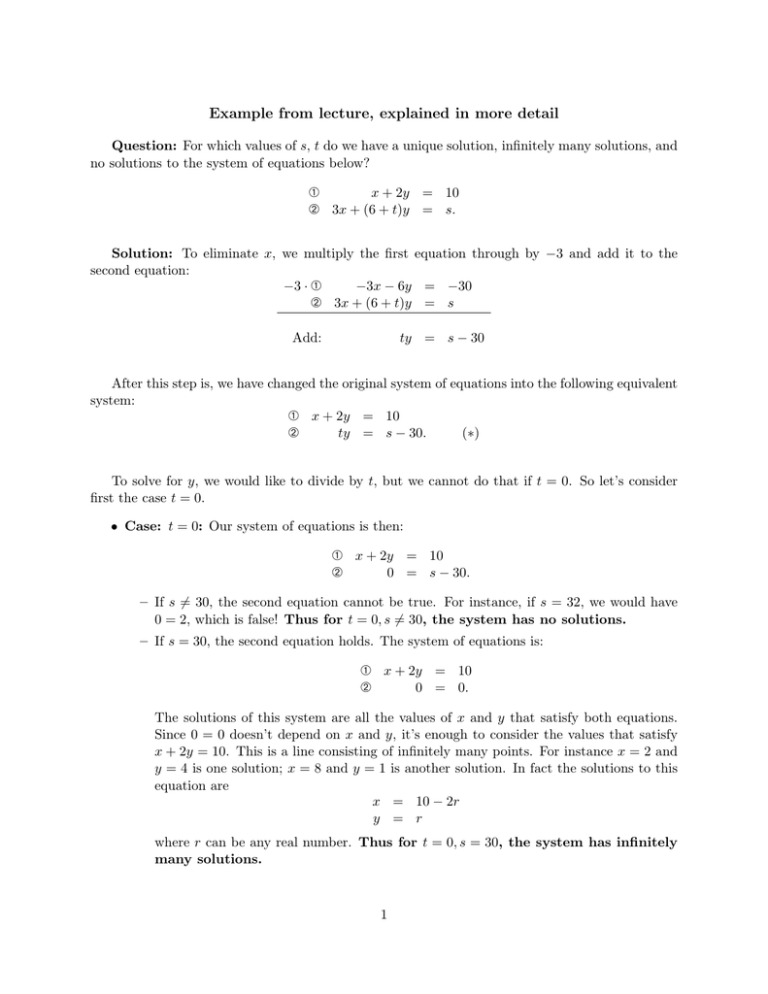Example from lecture, explained in more detail
advertisement

Example from lecture, explained in more detail Question: For which values of s, t do we have a unique solution, infinitely many solutions, and no solutions to the system of equations below? À x + 2y = 10 Á 3x + (6 + t)y = s. Solution: To eliminate x, we multiply the first equation through by −3 and add it to the second equation: −3 · À −3x − 6y = −30 Á 3x + (6 + t)y = s ty = s − 30 Add: After this step is, we have changed the original system of equations into the following equivalent system: À x + 2y = 10 Á ty = s − 30. (∗) To solve for y, we would like to divide by t, but we cannot do that if t = 0. So let’s consider first the case t = 0. • Case: t = 0: Our system of equations is then: À x + 2y = 10 Á 0 = s − 30. – If s 6= 30, the second equation cannot be true. For instance, if s = 32, we would have 0 = 2, which is false! Thus for t = 0, s 6= 30, the system has no solutions. – If s = 30, the second equation holds. The system of equations is: À x + 2y = 10 Á 0 = 0. The solutions of this system are all the values of x and y that satisfy both equations. Since 0 = 0 doesn’t depend on x and y, it’s enough to consider the values that satisfy x + 2y = 10. This is a line consisting of infinitely many points. For instance x = 2 and y = 4 is one solution; x = 8 and y = 1 is another solution. In fact the solutions to this equation are x = 10 − 2r y = r where r can be any real number. Thus for t = 0, s = 30, the system has infinitely many solutions. 1 • Case: t 6= 0: Going back to the system (∗), if t 6= 0 we can divide the second equation by t. Our new system of equations is then À x + 2y = 10 Á y = s−30 t . We can use back-substitution to solve for x, by substituting the value equation: = 10 x + 2 s−30 t x = 10 − 2(s−30) . t s−30 t for y in the first Our unique solution is x = 10 − y = s−30 t 2(s−30) t For instance, if t = 2, s = 32, the solution would be x = 8, y = 1. Thus for t, s any numbers such that t 6= 0, the system has a unique solution. 2

